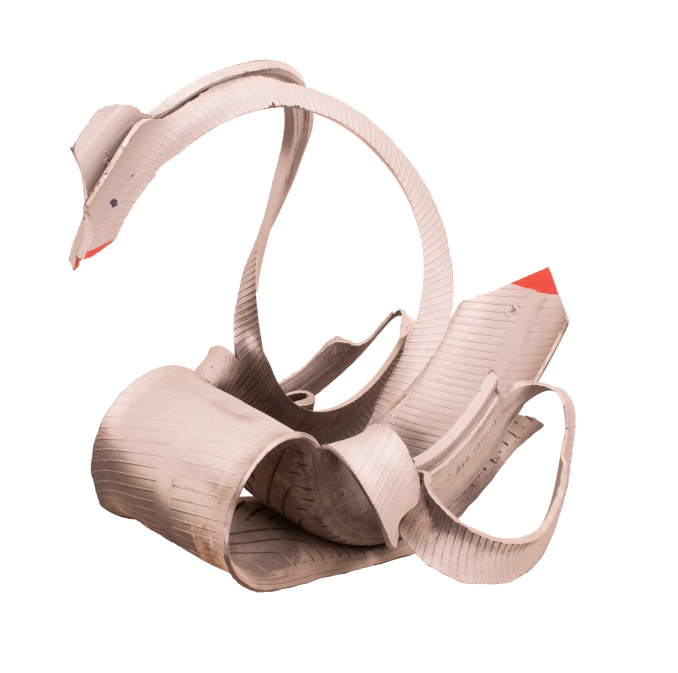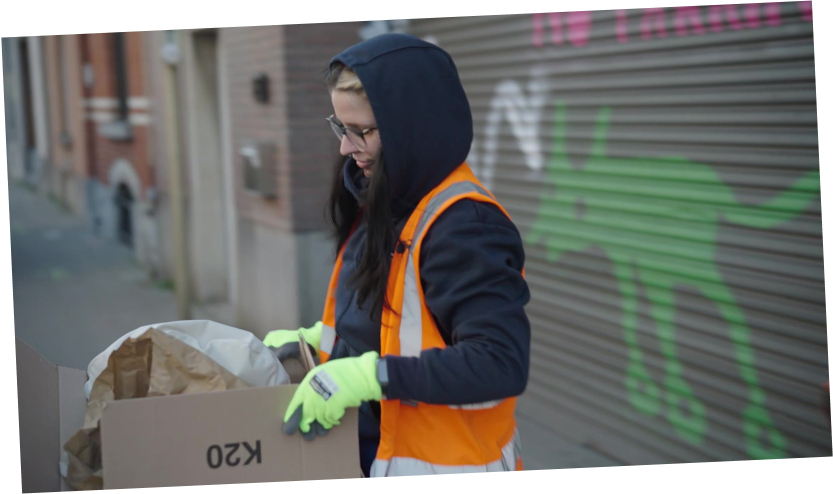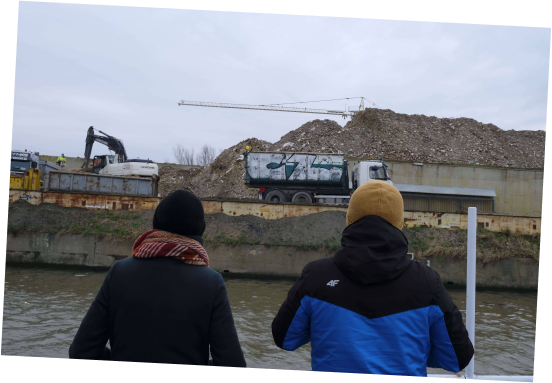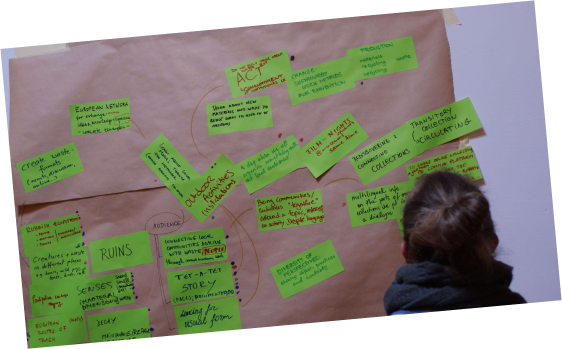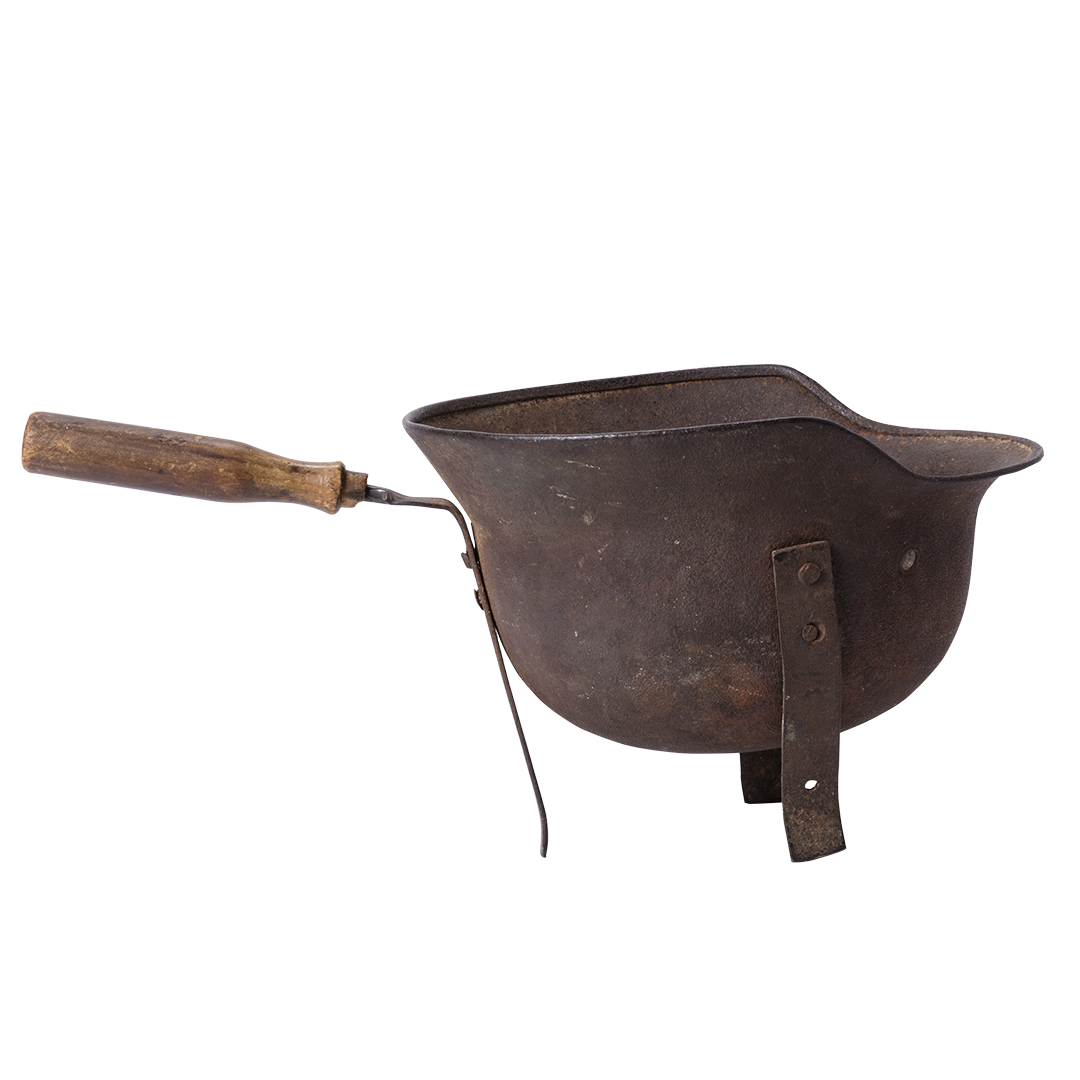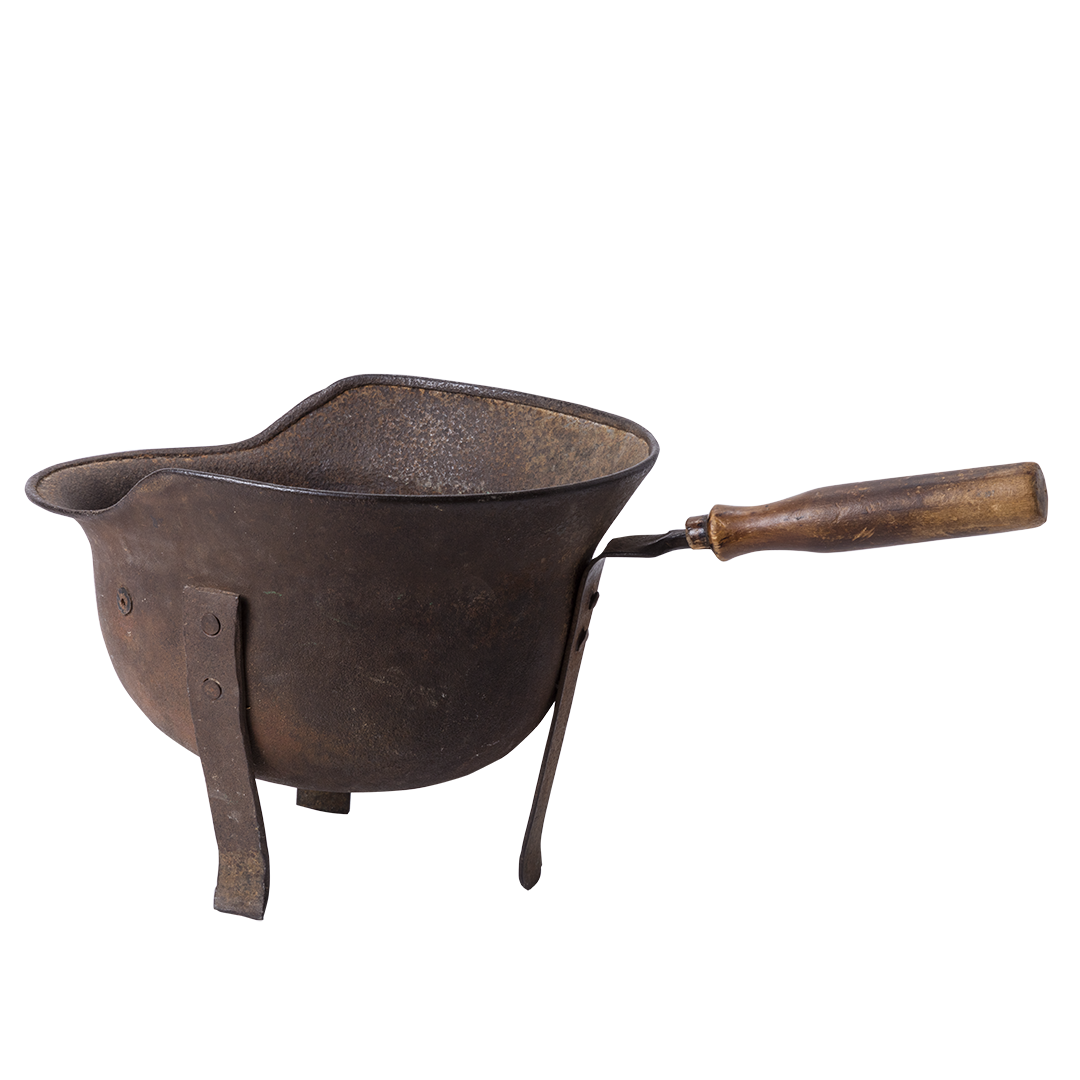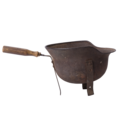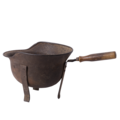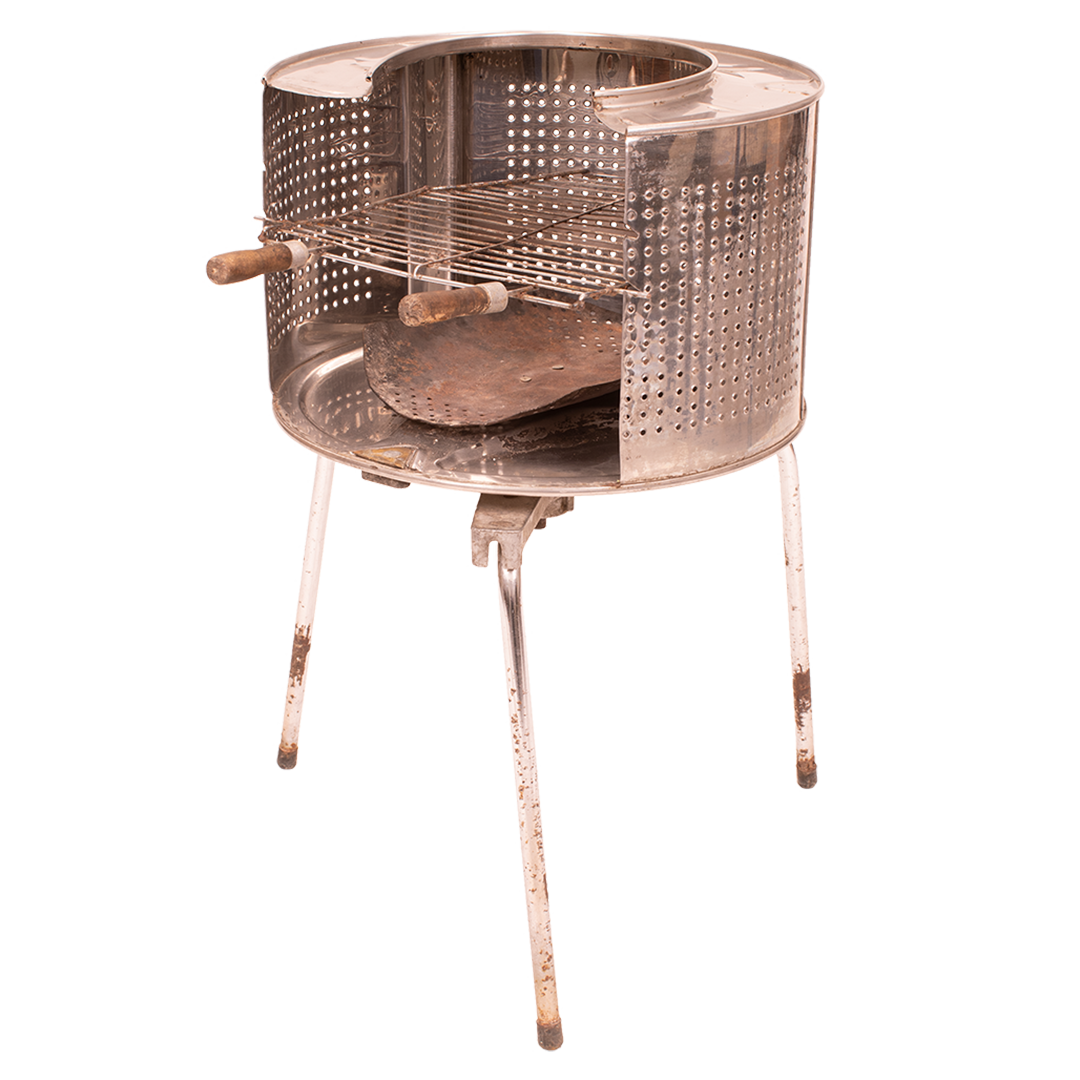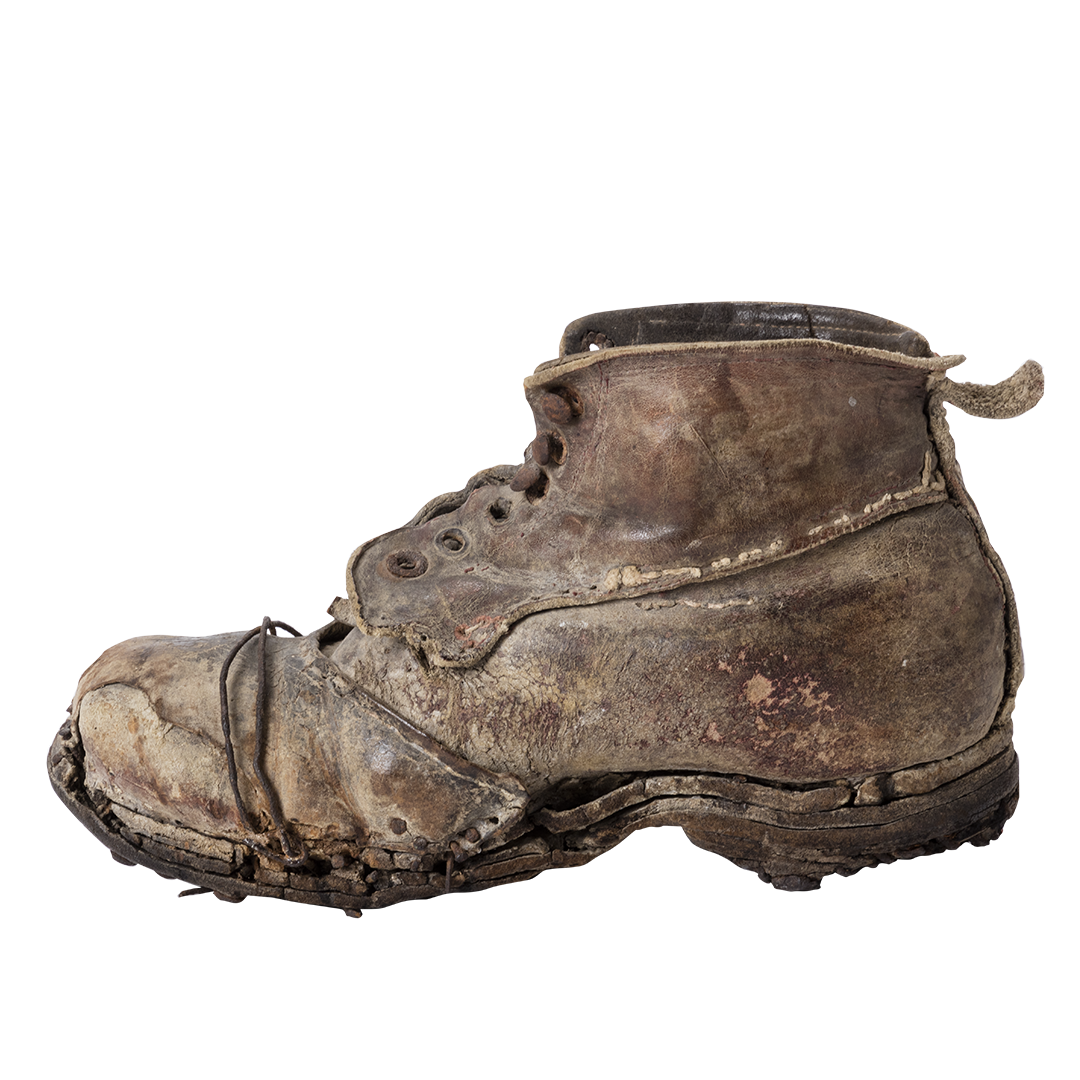Artist/Maker Unknown
Date Production/Creation
20th century (post World War II)
Entry in the museum collection
Terminus post quem 1950
Place of origin
Ozzano Taro, Collecchio, Parma, Emilia Romagna, Italy
Current location
Ettore Guatelli Museum foundation, Ozzanno Taro, Italy
Material
Iron, wood
Dimension
22 (H) 45 (l) 22 (p)
Inventory Number 107
Keyword Scarcity Self-made/DIY War
Copyright @Fondazione Museo Ettore Guatelli
Status Displayed
Image Credit Mauro Davoli
When life gives you helmets… Metal was long considered a precious material, far too valuable to waste.
What is this object about, who are the people behind it?
The items on display in the Ettore Guatelli Museum are a testimony to the everyday but also to creativity, craftsmanship and ingenuity in resolving practical problems by reinventing objects to perform different specific functions. In this case, the person who came across this German military helmet at the end of the Second World War decided to weld a wooden handle to it, making it easier to pick up. Thus transformed, it could be filled with embers and placed together with a "bed wagon" beneath the blankets to keep them warm throughout the night, especially in winter.
What places is this object related to, how European/transnational is it?
Ettore Guatelli saved from oblivion not only this helmet, but also a number of others dating back to World War II. Having been transformed into other everyday practical items, they are now on display in the museum’s "Kitchen Gallery". Together, they provide an insight into a European post-war rural society that relied heavily on creativity and manual dexterity, the necessity of the moment being the mother of highly ingenious invention. In this case, the helmets also prompt reflection on the emotional aspect, the possible feelings of occupied populations towards their occupiers and the desire for a new start following their liberation.
Why and how did this object arrive in the museum’s collection?
In the 1950s, Ettore Guatelli began increasingly regular visits to waste collectors’ storerooms in the Apennines, gradually laying the foundations for his future museum. From the mid-1970s onwards, his collection of objects grew considerably, unintentionally becoming part of a trend that took off in the seventies and eighties in Italy for the revival and promotion of popular culture. As a result, his museum became a unique and inimitable museum establishment devoted to the demographic, ethnological and anthropological heritage of twentieth-century Italy
What is the relation of this object to waste?
Spontaneous design items are a poignant reminder of the "make do and mend" philosophy that provided an albeit less systematic model for modern recycling methods. The need to make use of whatever was at hand proved inspirational when it came to reassembling and reusing items, rather than simply discarding them. As a result, unexpected breakdowns, breakages or simple wear and tear did not necessarily mean that life had to come grinding to a halt.

